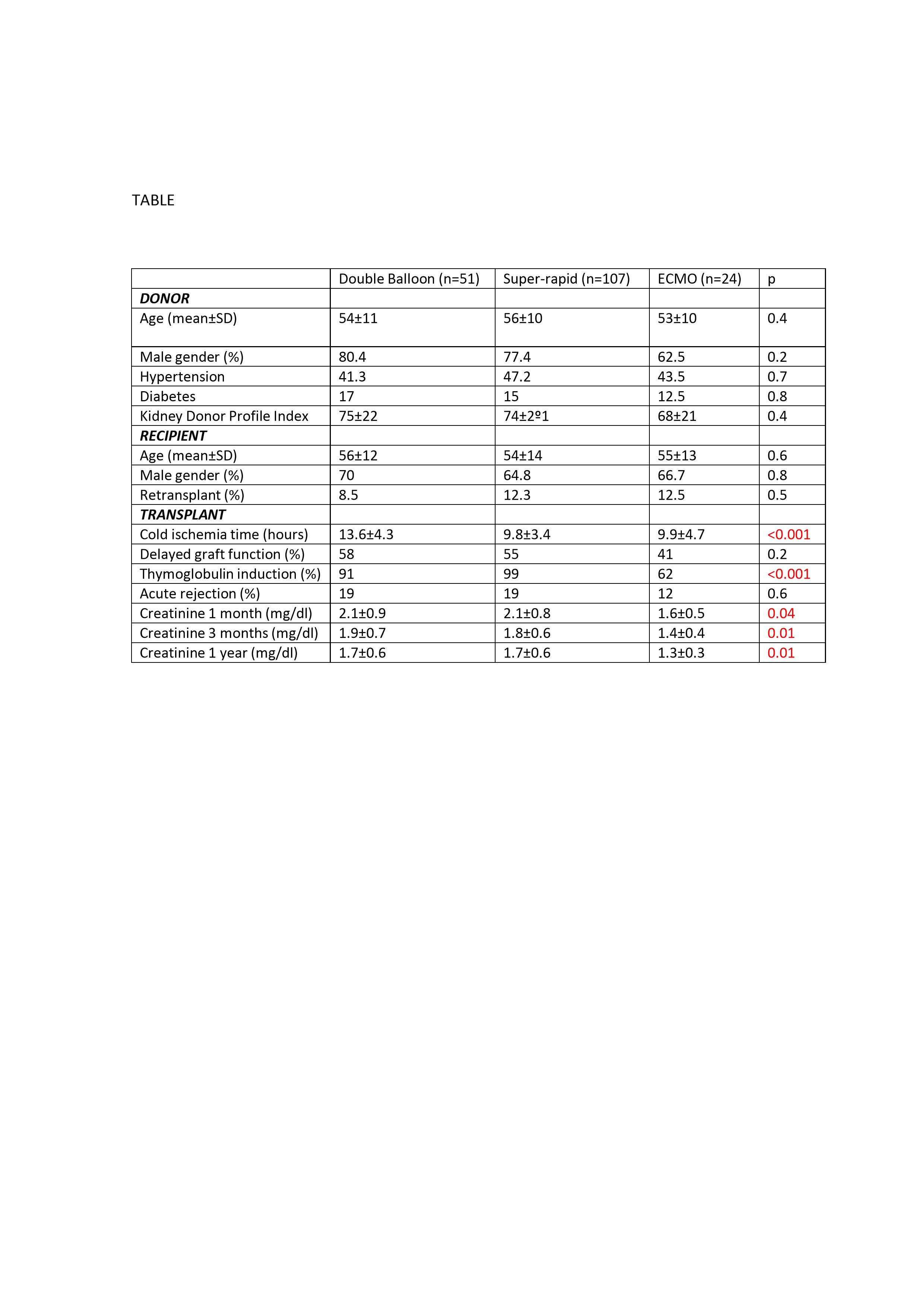Does the Type of Procurement and Preservation Influence the Results after Non-Heart-Beating Kidney Transplant from a Maastricht III Donor?
Nephrology Services, Regional University Hospital, University of Malaga, IBIMA, REDinREN (RD16/0009/0006), Málaga, Spain
Meeting: 2020 American Transplant Congress
Abstract number: 72
Keywords: Donors, non-heart-beating, Survival
Session Information
Session Name: Deceased Donor Intervention and Management Research
Session Type: Oral Abstract Session
Date: Saturday, May 30, 2020
Session Time: 3:15pm-4:45pm
 Presentation Time: 4:03pm-4:15pm
Presentation Time: 4:03pm-4:15pm
Location: Virtual
*Purpose: The use of extracorporeal membrane oxygenation (ECMO) systems for the preservation of organs from a controlled non-heart-beating donor has greatly increased over recent years. It is considered more beneficial as it increases the immediate graft function, and is associated with fewer post-transplant complications, a shorter hospital stay and better graft survival.
*Methods: The objetive of this study was to analyze the results after kidney transplant from a Maastricht type III non-heart-beating donor (MIIINHBD) comparing the various organ procurement and preservation techniques. This longitudinal retrospective study included 182 MIIINHBD undertaken at our center from 2011 to 2018. Differences were analyzed in renal function, acute rejection and graft survival between the various procurement and preservation techniques: (1) Premortem cannulation of the femoral artery and vein, and cold perfusion in situ via a double-balloon catheter (DB), (2) Super-rapid procurement (SR), (3) Premortem cannulation and preservation with ECMO.
*Results: The donor and recipient characteristics are shown in the attached Table.Delayed graft function (DGF) was lower with the ECMO technique: 41% vs 55% SR and 58% DB (P=0.2). The cold ischemia time was similar between the SR and ECMO techniques. The incidence of acute rejection was also lower with ECMO (12% vs 19%; p=0.6). Renal function was significantly better during the follow-up in the ECMO group (Table).One-year censored graft survival was better in the ECMO group (100% vs 92%; p=0.1).
*Conclusions: The ECMO technique results in a lower DGF in MIIINHBD, which in turn may improve kidney graft function and one-year graft survival after transplantation. Studies involving a greater number of patients are needed to confirm these findings.
To cite this abstract in AMA style:
López V, Casas C, Alonso J, Cabello M, Hernández D. Does the Type of Procurement and Preservation Influence the Results after Non-Heart-Beating Kidney Transplant from a Maastricht III Donor? [abstract]. Am J Transplant. 2020; 20 (suppl 3). https://atcmeetingabstracts.com/abstract/does-the-type-of-procurement-and-preservation-influence-the-results-after-non-heart-beating-kidney-transplant-from-a-maastricht-iii-donor/. Accessed December 16, 2025.« Back to 2020 American Transplant Congress

